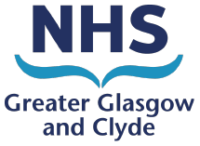What is an Environmental Control System?
Everyday, people use handsets and remotes to use the telephone, operate TVs and accessing sockets for turning on lights etc. For a few people using these handsets is extremely difficult due to complex physical disabilities. An environmental control is a technical system which can potentially overcome this problem.
What can they control?
Environmental control systems can be set up to operate a huge range of devices, including:
- Access and Security – community alarms, door lock
- Communication – intercom, telephone
- Comfort – beds, chairs, curtains, fan, lamps, lights
- Access – door
- Entertainment – TV, video, HiFi, DVD, Cable TV, Satellite TV, Teletext, Radio
How do Environmental Controls work?
Environmental controls are portable and use wireless signals to send commands to remote appliances.
Depending on the environmental control and the appliance that requires to be controlled, the environment control will send out either radio or infrared signals to operate the appliance remotely.
People can operate this equipment with various physical movements, such as; hand control, chin switch, head switch or voice activation.
Why do I need one?
People usually consider an environmental control to solve the following problems:
- Cannot easily operate appliances and equipment around the home
- Cannot unlock the door to let carers in
- Cannot use ordinary remote control handsets
- Spend some time on their own and may need to make an emergency call to a carer
- Want to remain independent in their own home
- Carer needs to be able to pop out without fear of person getting into trouble and being unable to call for help
Funding – Who will pay for it?
If you meet the NHS eligibility criteria, then you may be prescribed an environmental control system. The NHS will only install and maintain equipment that has been approved.
Some people choose to buy or rent environmental control systems privately. Others may be able to obtain funds from various government sources and have the equipment supplied to them on loan.
Other departments may be applied to for funding in some circumstances. These include Social Services (for Home Adaptation Grants or Disabled Facilities Grants), Local Education Authorities (for Equipment for Education Grants) and Employment Services (for ‘Access to Work’ equipment grants).
What products and services will the NHS provide?
The NHS may contract out the supply and servicing of equipment to an environmental control manufacturer. If so, they will agree with the manufacturer what equipment should be installed and what type of maintenance contract will be required.
Typically the NHS pay for an annual service.
The NHS operate to strict guidelines for provision, so you may find that the NHS will not be able to pay for everything you ask for.
What if I want more equipment that the Health Services will provide?
You may be able to buy equipment direct from the manufacturers, or from one of their approved suppliers. If the environmental control needs to be reconfigured to add in the command functions for the new equipment, then this would need to be agreed with the NHS provider.
Eligibility
A specialist assessment is required to determine a person’s suitability and eligibility. These criteria are available on request. Please contact your GP or Health Professional and ask to be referred:
Co-ordinator (Environmental Controls)
Westmarc
Southern General Hospital
1345 Govan Road
Glasgow
G51 4TF
Email: westmarc@ggc.scot.nhs.uk
Telephone: 0300 790 0129
